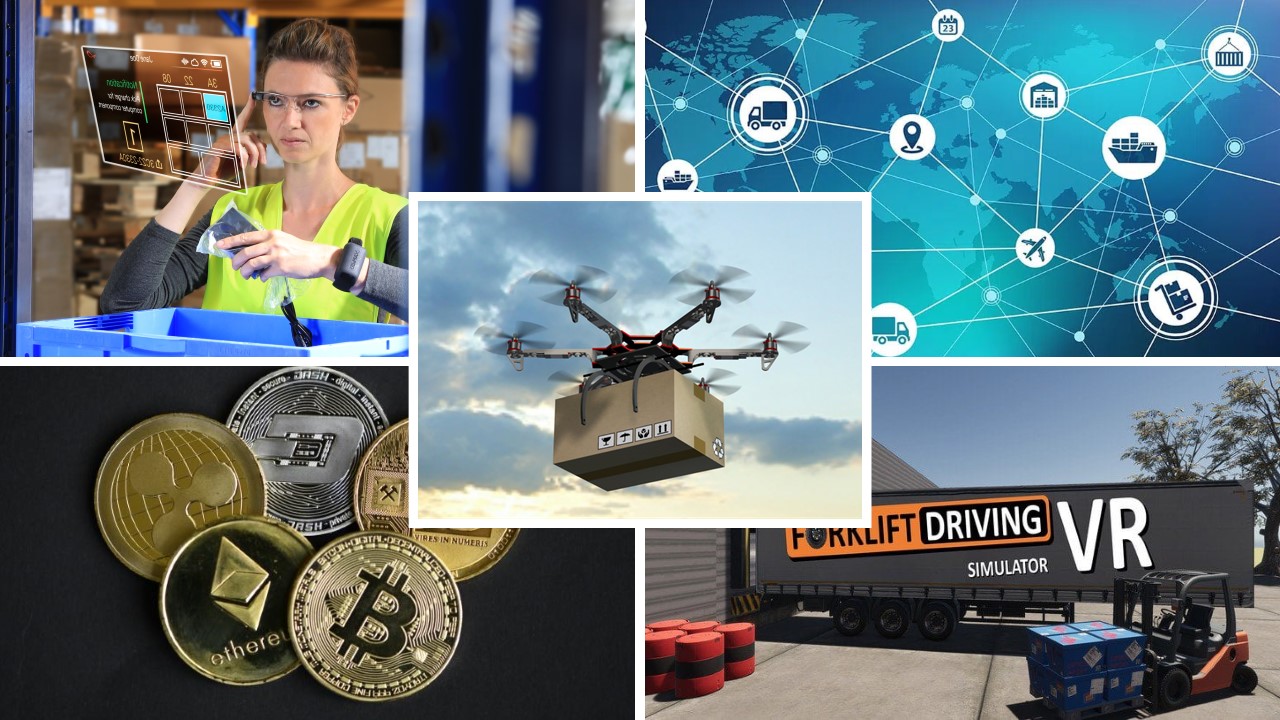The Future of Logistics Is Now
The future of logistics belongs to the Innovators. 3PL, 4PL and 5PL companies, embracing tools like Artificial Intelligence (AI), the Internet of Things (IoT), the Blockchain (Crypto), Virtual and Augmented Reality (VR/AR), and Autonomous Vehicles are “driving” the industry forward. Here, we explore six critical technologies, poised to revolutionize the logistics industry, along with case studies and real-world applications.
Internet of Things (IoT): Real-Time Tracking and Monitoring
IoT technology provides real-time tracking and monitoring of shipments. IoT sensors can track temperatures of a refrigerated loads and precise locations of a ships, containers, delivery vans or warehouse storage locations. This status and location information enables companies to prevent loss, reduce waste and optimize their transportation and warehousing operations. IoT can also play a vital role in complying with an increasingly complex regulatory environment.
Case Study: Johnson Controls has implemented IoT technology to optimize the performance of its HVAC systems, using real-time data to predict maintenance needs before breakdowns occur.
Artificial Intelligence (AI) and Machine Learning (ML): Data-Driven Decision Making
Artificial intelligence (AI) is quickly moving to the forefront of logistics innovation. AI helps companies forecast demand, find customers, find optimum warehouse locations, allocate transportation assets, and maximize the efficiency of logistics operations. Logistics customers as well as providers, benefit from AI-powered customer service tools like Front, which provide virtually instant answers to sometimes highly complex questions, involving real-time data, from multiple TMS, WMS and accounting systems.
Vendor Solution: Manhattan Associates offers AI-driven supply chain software that helps businesses make data-backed decisions in real time.
Augmented Reality (AR): Enhancing Inspections and Maintenance
Augmented reality (AR) is revolutionizing logistics by providing real-time, hands-on guidance for training, inspections, and maintenance tasks. Technicians can use AR glasses to overlay digital instructions onto physical components, making repairs faster and more accurate. AR is also being used in warehouse operations, to speed up the picking process, by guiding workers in locating items, reducing human error, and increasing productivity.
Case Study: DHL has implemented AR in its warehouses, improving picking efficiency by up to 25% and significantly reducing training time for new employees.
Virtual Reality (VR): Training and Simulation for Workforce Development
Virtual reality (VR) offers a groundbreaking way to train drivers, warehouse workers, and other logistics staff. VR simulations provide a safe and controlled environment for employees to practice complex and often dangerous tasks. For example, truck drivers can use VR to simulate hazardous road conditions, allowing them to develop their skills before they encounter these situations in real life. Similarly, warehouse staff can use VR simulations to practice handling forklifts, improving safety and operational efficiency.
Vendor Solution: Strivr offers immersive VR training solutions specifically designed for supply chain and logistics teams, providing an interactive way to upskill employees.
Blockchain Technology (Crypto): Ending Fraud & Waste in the Supply Chain
By using Blockchain-based solutions, companies can make sure every transaction within even the most complex supply chain is secure, accountable, trackable and auditable. A coffee distributor can use the blockchain to verify the beans they are buying are organic, shipped direct from the grower (no Coyotes), transported by their carrier of choice (no Double-brokering), received by the warehouse and ultimately, delivered to their customers. A carrier can accept loads, knowing they will be paid immediately upon delivery, according to the terms of their digital contract, ending the need and cost of Factoring, making goods less costly to ship and more profitable for carriers.
Vendor Solution: IBM’s Food Trust blockchain helps companies trace the journey of food products from farm to table, ensuring safety and transparency at every step.
Autonomous Vehicles and Drones: Revolutionizing Last-Mile Delivery
Autonomous vehicles and drones are poised to revolutionize logistics, particularly around last-mile delivery. Drones have already begun delivering essential supplies to hard-to-reach areas, while autonomous vehicles are improving the efficiency of delivery operations in congested urban environments. These technologies can reduce labor costs, increase delivery speeds, and expand delivery coverage.
Case Study: UPS Flight Forward is using drones to deliver medical supplies, reducing delivery times and making essential products more accessible to rural and remote locations.
The Future Is Here
The Future of Logistics is Now. It’s no longer a distant vision. With technologies like IoT, AI, VR, AR, blockchain, and Autonomous Vehicles rapidly being adopted, businesses that embrace these innovations will find themselves at the forefront of the logistics revolution. These tools not only improve efficiency and safety but also give companies a competitive edge in an increasingly complex global marketplace. As these technologies continue to evolve, the logistics industry will become even more interconnected, intelligent, and responsive.

